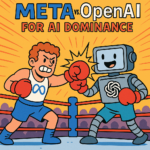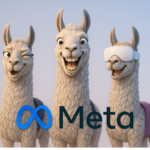hi jeffrey soon i will reach you out

Meta’s Llama 4, the anticipated successor in their series of large language models, has experienced notable delays before its eventual release. These postponements have sparked discussions across the tech community, leading to an examination of the multifaceted challenges Meta faced during its development. Understanding these hurdles not only sheds light on the complexities inherent in advancing AI technology but also offers valuable lessons for the broader industry.
Data Pipeline Complexity
Developing a model of Llama 4’s caliber necessitated handling vast and diverse datasets. Meta aimed to refine massive multilingual datasets to address biases, ensure factual correctness, and capture evolving language use. This endeavor required extensive filtering, cleaning, and augmentation processes that ultimately outstripped initial timelines. The ambition to create a model proficient across over 200 languages added complexity to the data engineering process.[resemble.ai]
Advanced Model Performance Targets
Llama 4 was envisioned to not only surpass its predecessors but also to compete robustly with leading models like OpenAI’s GPT-4. However, internal benchmarks revealed performance issues, particularly in areas such as mathematical reasoning and conversational capabilities. These shortcomings prompted Meta to explore innovative training methodologies, including the “mixture of experts” approach, to enhance efficiency and performance.[androidcentral, reuters]
Hardware Infrastructure Constraints
Scaling up to higher parameter counts demands substantial computational resources. Meta’s plans to invest up to $65 billion in AI infrastructure underscore the magnitude of resources required. Despite this investment, challenges such as hardware supply bottlenecks and allocation issues, exacerbated by global chip shortages, impeded large-scale training cycles.
Regulatory and Ethical Oversight
In an era of heightened scrutiny over AI’s societal impacts, Meta intensified its pre-launch evaluations to detect and mitigate harmful or unethical model outputs. Ensuring compliance with stringent data privacy laws and misinformation prevention standards necessitated repeated iterations of the system’s safeguards, contributing to development delays.
Resource-Intensive Alignment Requirements
Techniques like Reinforcement Learning from Human Feedback (RLHF) became more labor-intensive as models advanced. The need for thorough human-in-the-loop evaluations to test edge cases extended development timelines, requiring specialized reviewers to ensure the model’s reliability and safety.
Competition and Reputation Pressures
The rapid advancements of competitors, notably OpenAI and emerging entities like China’s DeepSeek, placed additional pressure on Meta. The success of these rivals accelerated Meta’s development timeline, pushing the company to refine features such as multilingual fluency and advanced reasoning beyond standard readiness levels. [opentools]
Product Integration Hurdles
Integrating Llama 4 into Meta’s suite of products, including social media platforms and enterprise services, unveiled performance gaps. Ensuring seamless functionality across diverse applications required extensive testing and optimization, further delaying the model’s deployment.[databricks]
Cross-Lingual and Domain-Specific Benchmarks
Designing Llama 4 to excel in numerous languages and industry-specific domains required the curation and testing of reliable domain- and language-specific datasets. This process was more time-consuming than anticipated, as ensuring the model’s proficiency across diverse contexts was paramount.
Conclusion
The journey to Llama 4’s release underscores the intricate interplay of technical, ethical, and organizational challenges in developing cutting-edge AI models. Meta’s experience highlights the importance of setting realistic timelines, investing in robust infrastructure, and maintaining flexibility to adapt to unforeseen hurdles. As AI continues to evolve, these lessons serve as a guide for future innovations in the field.


















No Comments